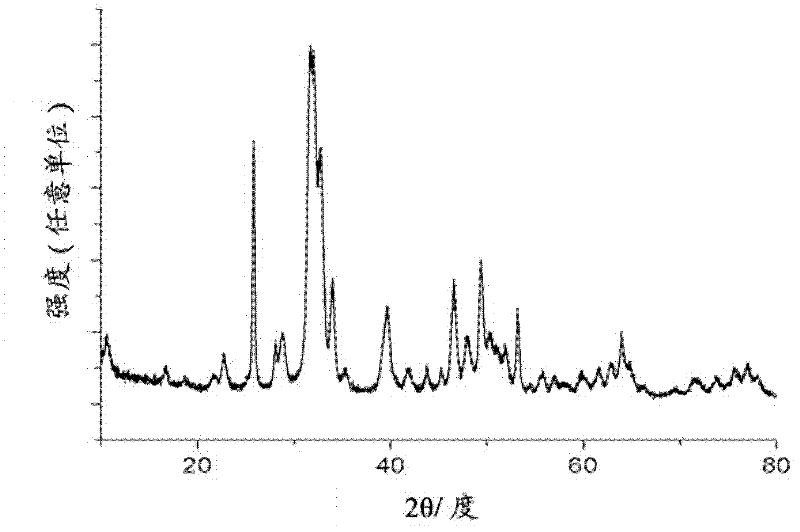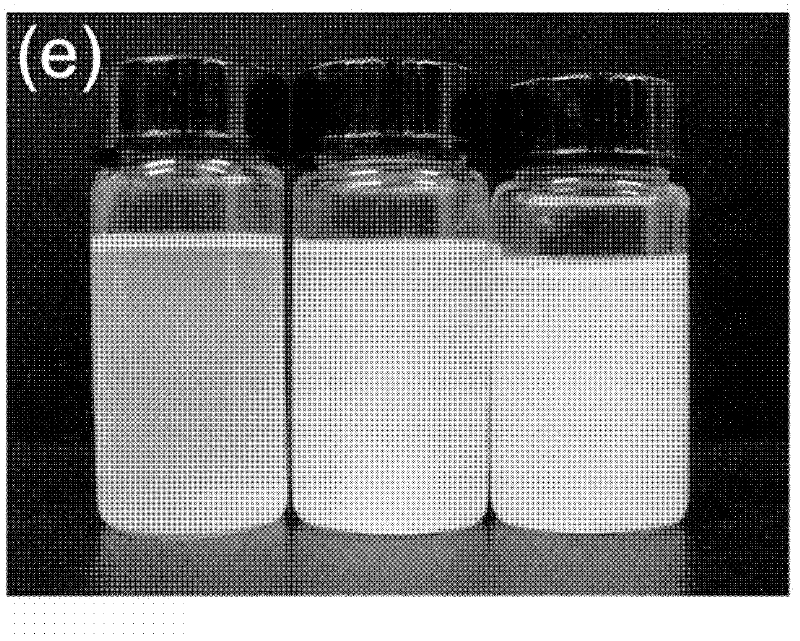Preparation method of amphiphilic monodisperse hydroxyapatite monocrystal nanorod
A technology of hydroxyapatite and single crystal nanometer, which is applied in the direction of nanotechnology, chemical instruments and methods, phosphorus compounds, etc., can solve the problems of poor shape size, poor shape controllability, single surface characteristics of nano HA, etc. Achieve the effects of good process repeatability, stable product quality and good application prospects
- Summary
- Abstract
- Description
- Claims
- Application Information
AI Technical Summary
Problems solved by technology
Method used
Image
Examples
Embodiment 1
[0026] Step 1: Add 8mL of 0.28M calcium nitrate aqueous solution, 8mL of 0.16M sodium phosphate aqueous solution, 0.5g of 2-hydroxypropyl-β-cyclodextrin, 16mL of absolute ethanol and 4mL of oleic acid into 50mL of polytetrafluoroethylene In the vinyl fluoride hydrothermal reaction kettle, stir well at room temperature.
[0027] Step 2: Seal the reactor in Step 1, and react at 150° C. for 10 h. Then cool naturally to room temperature, open the reaction kettle, and wash with absolute ethanol, cyclohexane and water in sequence to obtain the final reaction product. The product was identified as hydroxyapatite by X-ray powder diffraction, and the results were as follows: figure 1 Shown; The prepared product can be dispersed in the dispersion liquid of different polarities simultaneously ( figure 2 ); product morphology can be detected by transmission electron microscopy, such as image 3 The diameter distribution of the nanorods prepared as shown is 8~12nm, and the length is be...
Embodiment 2
[0029] Step 1: Add 8mL of 0.28M calcium nitrate aqueous solution, 8mL of 0.16M sodium hydrogen phosphate aqueous solution, 0.25g of 2-hydroxypropyl-β-cyclodextrin, 16mL of absolute ethanol and 2mL of oleic acid into 50mL of poly In the tetrafluoroethylene hydrothermal reaction kettle, stir well at room temperature.
[0030] Step 2: Seal the reactor in Step 1, and react at 180° C. for 5 hours. Then cool naturally to room temperature, open the reaction kettle, and wash with absolute ethanol, chloroform and water in sequence to obtain amphiphilic monodisperse hydroxyapatite single crystal nanorods.
Embodiment 3
[0032] Step 1: Add 8mL of 0.28M calcium nitrate aqueous solution, 8mL of 0.16M sodium dihydrogen phosphate aqueous solution, 0.5g of 2-hydroxypropyl-β-cyclodextrin, 16mL of absolute ethanol and 6mL of oleic acid into 50mL of In a polytetrafluoroethylene hydrothermal reaction kettle, stir well at room temperature.
[0033] Step 2: Seal the reactor in Step 1, and react at 120° C. for 15 hours. Then cool naturally to room temperature, open the reaction kettle, and wash with absolute ethanol, chloroform and water in sequence to obtain amphiphilic monodisperse hydroxyapatite single crystal nanorods.
PUM
| Property | Measurement | Unit |
|---|---|---|
| diameter | aaaaa | aaaaa |
| length | aaaaa | aaaaa |
Abstract
Description
Claims
Application Information
 Login to View More
Login to View More - R&D
- Intellectual Property
- Life Sciences
- Materials
- Tech Scout
- Unparalleled Data Quality
- Higher Quality Content
- 60% Fewer Hallucinations
Browse by: Latest US Patents, China's latest patents, Technical Efficacy Thesaurus, Application Domain, Technology Topic, Popular Technical Reports.
© 2025 PatSnap. All rights reserved.Legal|Privacy policy|Modern Slavery Act Transparency Statement|Sitemap|About US| Contact US: help@patsnap.com



